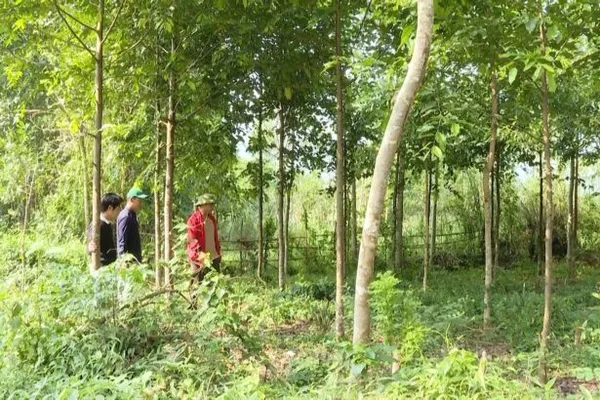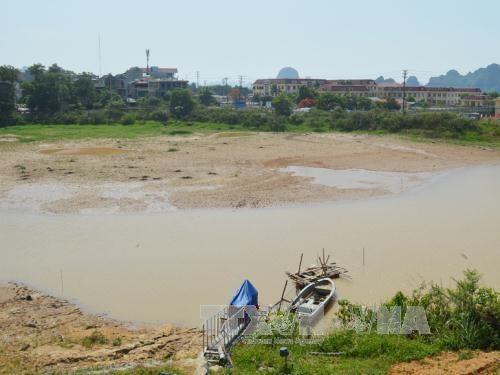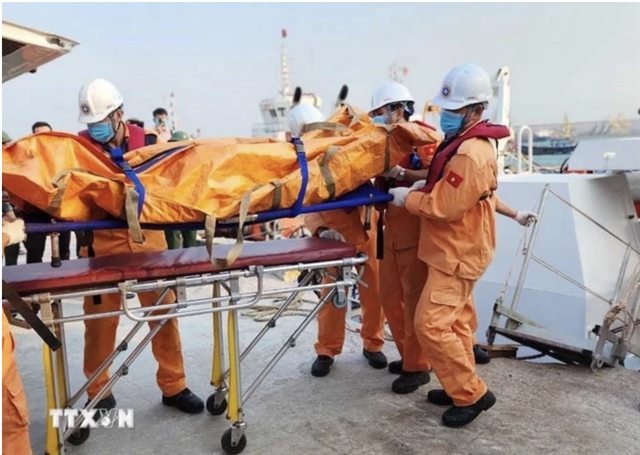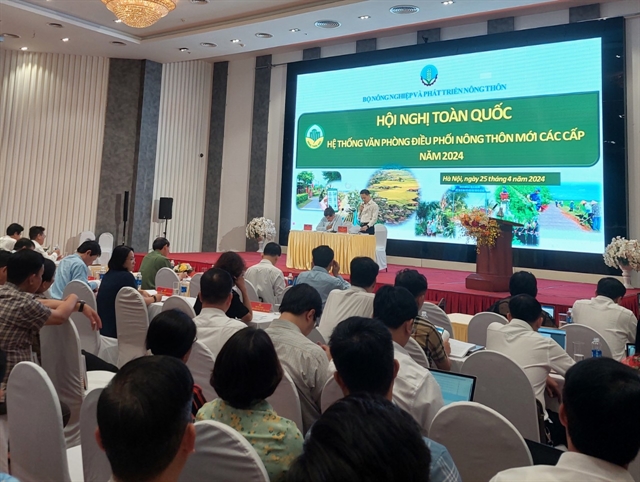 Environment
Environment

Authorities in Quảng Ninh Province are worried over a decline in water levels at major reservoirs. The reservoirs have been drying up due to droughts brought on by hot weather and a lack of rain, meaning that a number of households in the province have faced shortages.
 |
| The low level of water at the Mắt Rồng Reservoir in Vân Đồn District, Quảng Ninh Province. — VNA/VNS Photo Nguyễn Hoàng |
QUẢNG NINH — Authorities in Quảng Ninh Province are worried over a decline in water levels at major reservoirs, which have been drying up due to droughts brought on by hot weather and a lack of rain.
As a result, a number of households in the province have faced water shortages.
Last month, water levels at the Thác Nhồng dam fell 20-30cm below the overflow threshold – the lowest point ever recorded – which was insufficient to provide water for the Đồng Ho Water Treatment Plant in Hoành Bồ District.
At the same time, water levels at the Cao Vân Reservoir (which has a water volume of 10.8 million cu.m) in the same district fell to the lowest point since the beginning of the year, which was only 25.8m from the bottom of the reservoir.
The Mắt Rồng Reservoir in Vân Đồn District is facing the same situation, and so is a major shallow groundwater source called Lộ 12 in the district.
Previously, this groundwater source provided some 2,000cu.m of water per day for the Vân Đồn Water Treatment Plant and the district’s residents. However, its capacity has recently decreased to 720cu.m per day, making up for only two thirds of its previous capacity.
The water shortage has become so severe that recent heavy rains on June 6 and 7, and those taking place at the end of May, did little to help, according to local authorities.
Trịnh Văn Bình, deputy director of the Quảng Ninh Clean Water Joint Stock Company, said the shortage was caused by water demand spikes during hot days from local residents, and from a large number of tourists coming to Vân Đồn District and the eastern area of Hạ Long City for vacations.
To improve the situation, the company simultaneously started two water-related projects on June 2, which Bình said would ensure water supplies for the Vân Đồn District even during long droughts.
The first project will pump water on a 4.3km path from Cẩm Phả City to the district’s Đông Xá Commune to join its water supply network, which was completed on Thursday evening.
The second project will transport water on a 6.3km path from the Khe Mai Reservoir in the district’s Đoàn Kết Commune to provide water for the Cái Rồng Reservoir, which will then be filtered and provide to the whole district. It is expected to be complete by the end of this month.
The company has also installed extra turbochargers at the Yên Lập Water Treatment Plant to provide more water for Bãi Cháy beach in Hạ Long City and avoid water shortages for households on hills and mountains.
Vũ Văn Diện, vice chairman of the province’s People’s Committee, has assigned the province’s Department of Agriculture and Rural Development to collaborate with the company to complete technical designs for a renovation project of the Cao Vân Reservoir by October, and complete bidding in the fourth quarter of the year so that the project can start in the dry season of next year.
The other side of development
The objective causes of water shortage in the province have been discovered and worked on. However, local residents are concerned that several airport, traffic infrastructure and luxury resort projects – which would supposedly create a major socio-economic breakthrough for the province – are producing negative impacts on water resources and underground water, and leading to water exhaustion at the reservoirs.
Water experts are concerned about the construction of a road connecting the Ba Chẽ District to a ring road to the north of Hạ Long City. The project is still in its infancy, but if it is implemented, clearance of dozens of hectares of primary forests in the Đồng Sơn - Kỳ Thượng National Nature Reserve in Hoành Bồ District will be required, which will disrupt the ecosystem here, damage water resources and cause sedimentation in the 10.8 million cu.m Cao Vân Reservoir.
Once the reservoir’s water is drained, water scarcity will occur in the districts of Cẩm Phả, Vân Đồn and the eastern area of Hạ Long City where some 60 per cent of the total number of the province’s households reside.
Local residents are hoping that the authorities will be cautious and carefully review the negative impacts that those projects will have on the province’s water resources, especially those planned to take place near the watersheds. — VNS









